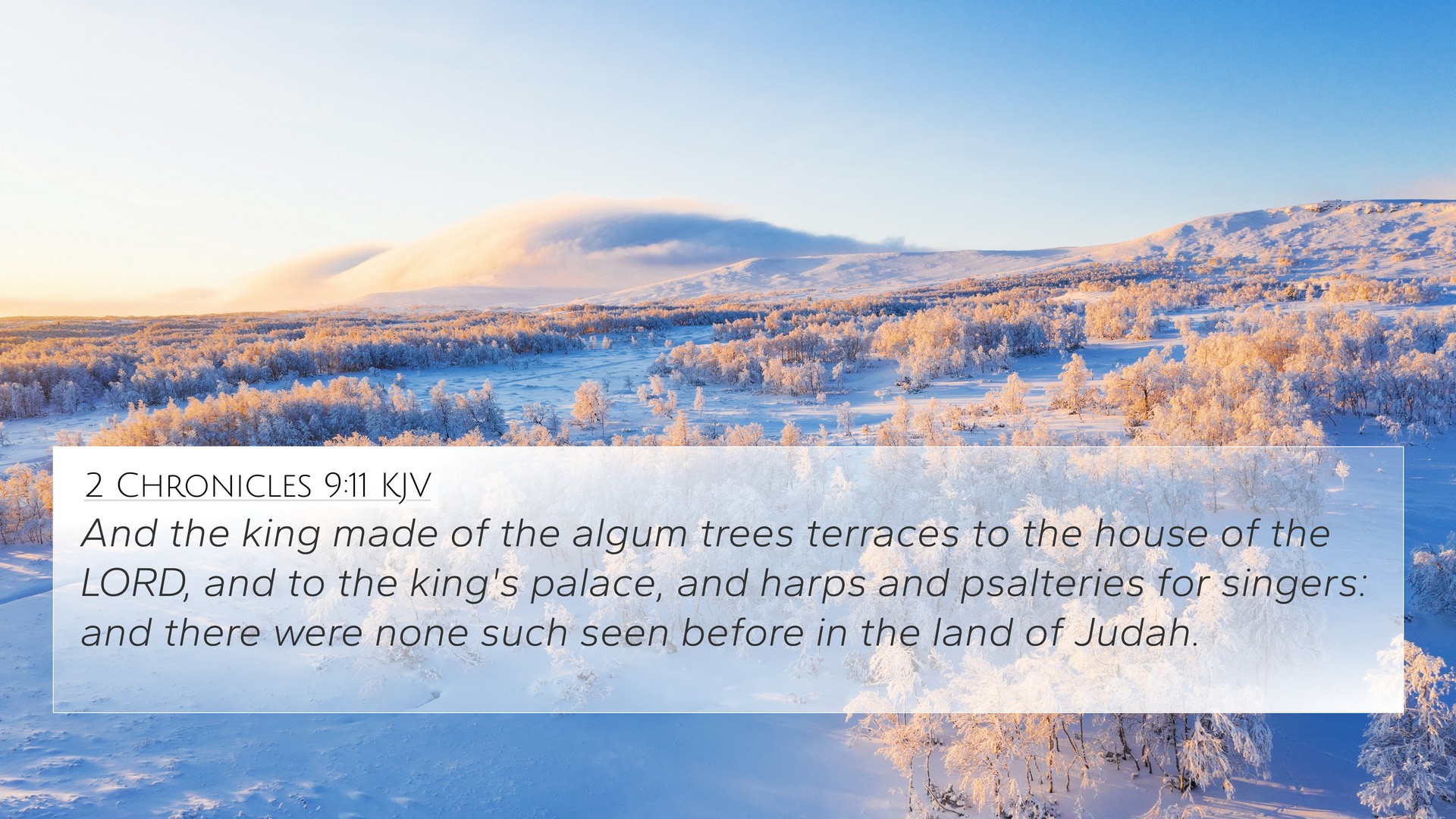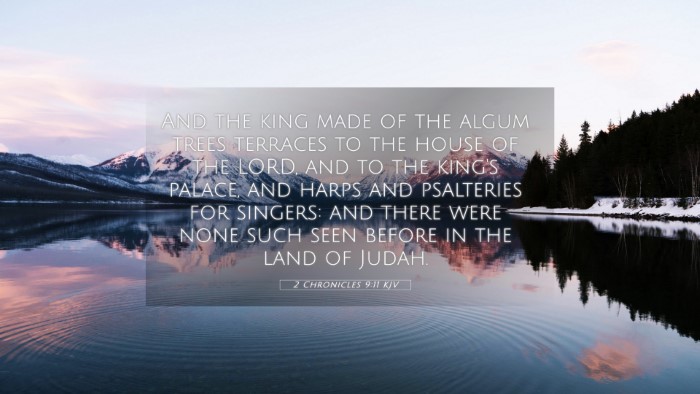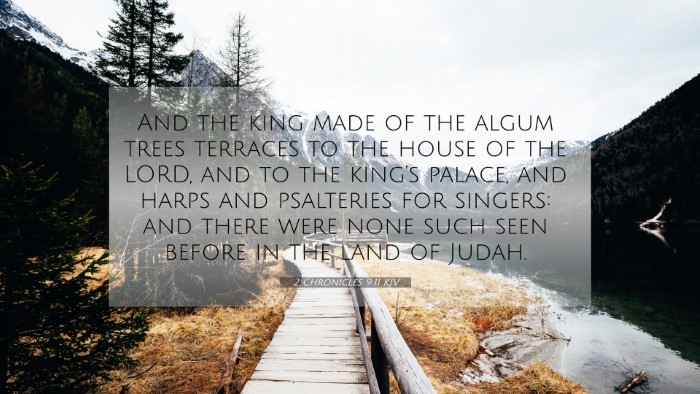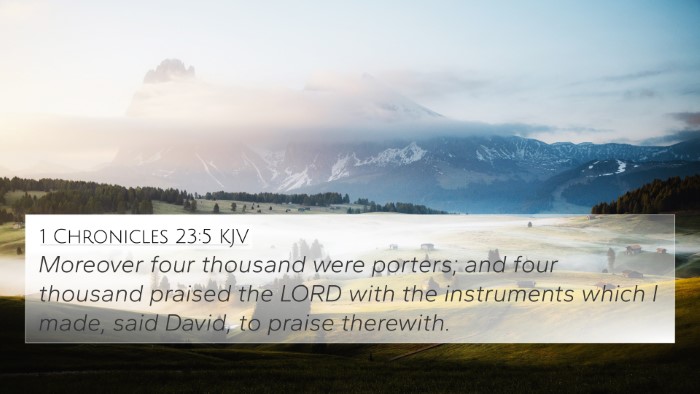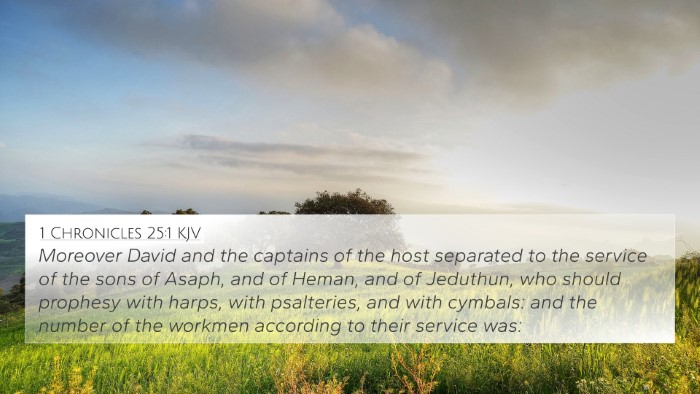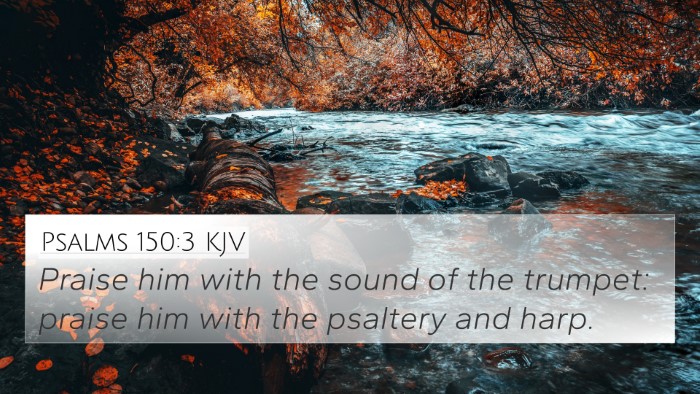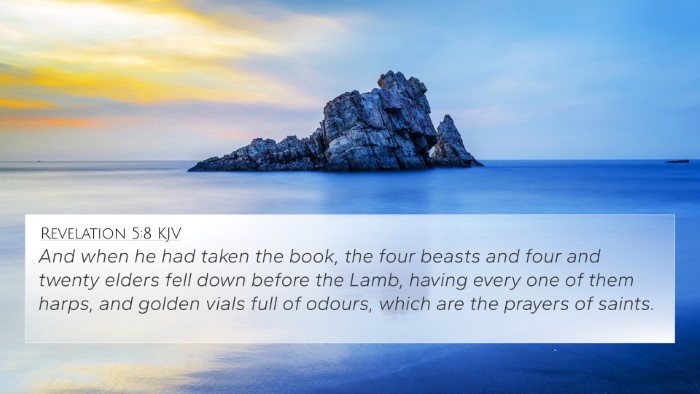Understanding 2 Chronicles 9:11
Verse Reference: 2 Chronicles 9:11
“And the king made of the almug trees terraces to the house of the LORD, and to the king's palace, and harps and psalteries for singers: and there were none such seen before in the land of Judah.”
Overview
This verse occurs within the context of King Solomon’s reign and highlights the extravagance of his construction projects. It emphasizes not only his wealth but also his dedication to God, in that he adorned the temple with exquisite materials and created instruments for true worship.
Commentary Insights
Matthew Henry
Matthew Henry notes that the use of almug trees for the temple signifies the luxurious nature of Solomon's contributions, reflecting both his prosperity and his commitment to beautifying God’s house. The reference to harps and psalteries for singers emphasizes the importance of worship and music in the temple experience, indicating that worship should be a joyful and beautiful expression of devotion to God.
Albert Barnes
Albert Barnes stresses that these details highlight the connection between earthly wealth and spiritual devotion. He points out that such richness in offerings was both a reflection of Solomon's ability and a symbol of his dedication to God’s service, establishing a precedent for future generations about the importance of worship and artistic expression in the temple.
Adam Clarke
Adam Clarke provides insight into the specific use of almug trees, which are alleged to be a rare and precious wood, often equated with elegance and strength. Clarke suggests that the unparalleled artistry and craftsmanship invoked by these materials would inspire awe and reverence among worshippers, positioning the temple as a central focal point for worship and a beacon of God’s glory.
Cross-References and Themes
This verse connects with various others throughout the Bible, providing a deeper understanding of its significance:
- 1 Kings 10:11-12: Reiterates the source and use of almug trees and other precious materials.
- Psalm 147:1: Highlights the beauty of worship through music, akin to what Solomon established for the temple.
- 2 Samuel 6:5: References musical instruments used in worship, further connecting the joy of praise to God.
- Exodus 25:3-8: Discusses offerings for the sanctuary building, highlighting the importance of beauty in worship spaces.
- Hebrews 9:24: Mentions the heavenly temple, contrasting earthly materials with heavenly realities.
- Matthew 6:19-21: Introduces the concept of laying treasures in heaven versus earthly treasures, tying Solomon’s wealth to spiritual investment.
- 1 Chronicles 22:14: Connects to David’s preparations for constructing the temple, showing continuity in the importance of the temple.
Thematic Connections
The themes present in this verse encompass:
- Luxury and devotion
- The role of music in worship
- The importance of beautifying spaces dedicated to God
- Wealth as a tool for honoring God
- The continuity of worship practices from the Old Testament to the New Testament
Conclusion
In conclusion, 2 Chronicles 9:11 serves as a powerful testament to Solomon's legacy as a king who understood the balance between wealth and the worship of God. This verse, rich in detail, encourages modern readers to appreciate the beauty in worship and the significance of dedicating our best to God. By utilizing tools for Bible cross-referencing, such as a Bible concordance and Bible cross-reference guide, believers can explore the intricate relationships between various scriptures, providing context and deepening their understanding of themes evident in Solomon's time.
